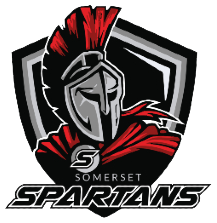Copyright & Fair Use
Copyright and Fair Use along with plagiarism are very complex issues. Let's take a look at these topics and try to simplify them as much as possible so you can avoid infringing on someone's copyright or plagiarizing someone else's work.
Plagiarism
According to plagiarism.org, the follow is considered plagiarism:
turning in someone else's work as your own
copying words or ideas from someone else without giving credit
failing to put a quotation in quotation marks
giving incorrect information about the source of a quotation
changing words but copying the sentence structure of a source without giving credit
copying so many words or ideas from a source that it makes up the majority of your work, whether you give credit or not (see our section on "fair use" rules)
It is of the utmost important that you cite your sources for any materials you use that are not your own. If you did not take the picture, film the video, record the song, or write the paper, you must cite your source whether the resource is copyrighted or not and make it clear that these are not your own thoughts, ideas, or work.
While writing a paper you can use both quoting and paraphrasing to help avoid plagiarizing the work of someone else. If you are not familiar with the difference between these strategies please read up on them here: www.plagiarism.org/citing-sources/how-to-paraphrase/ If you would like some help paraphrasing the Purdue Online Writing Lab is a useful resource. Purdue Writing Lab also has a useful page on Quoting, Paraphrasing, and Sumamrizing.
Fair Use
If copyright gave creators the ability to completely control all uses of their works, creativity and culture would soon grind to a halt. No work is created in a vacuum; all new works build on, are influenced by, and make reference to works that have gone before. Moreover, since copyright has some fundamental public interest purposes, it's important that the public be able to do some kinds of things with all works.
As the University of Minnesota Libraries points out there are exceptions to the copyright laws that allows us to use previous works to create our own. One exception is in education through the Classroom Use Exception, another is called Fair Use. It is a set of rules that allow for at least a portion of copyrighted work to be used if it complies these 4 factors: purpose and character of use, nature of the original work, amount and substantiality of the work used, and effect of the Use on the potential market for or value of the source work. A more comprehensive guide to Fair Use can be found on the University of Minnesota Libraries Fair Use web page as well as a checklist to determine if Fair Use is being met.
Below are the limitations set for the main types of media outlined under Fair Use (each has a limit of 2 years of use):
Text
Up to 10% or 1000 words total, whichever is less
An entire poem of less than 250 words
250 words of a poem
3 poems from 1 author
5 poems from an anthology
2 pages from an illustrated piece (graphic novel)
Images
Entire images or photographs
No more than 5 images per artist or photographer
No more than 15 images per collection or 10% of the collection, whichever is less
Music
Up to 10% of a song or it's lyrics
Never more than 30 seconds of copyrighted music
This includes background music as well
Video
Teacher use is unrestricted if aligned with curriculum
10% or 3 minutes, whichever is less, for projects
